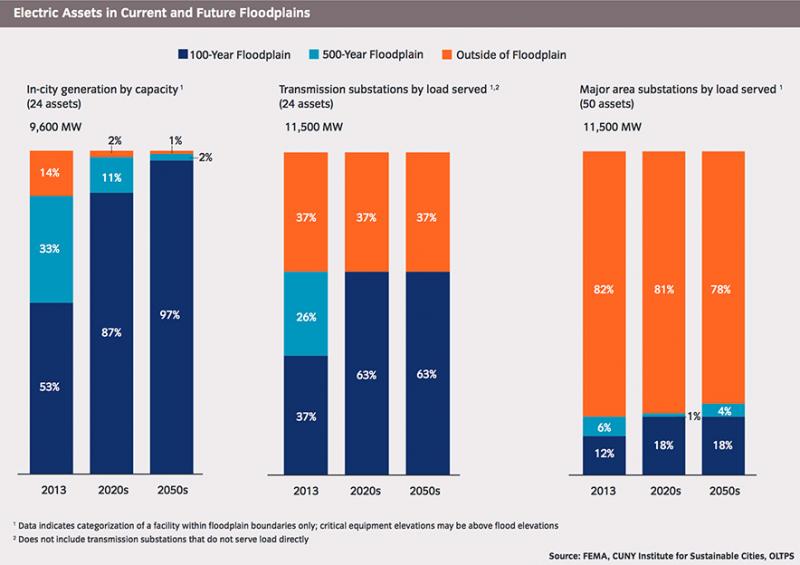
Working Together to Keep the Lights on in New York City
Climate stressors and impacts
Despite its seeming invincibility as the nation’s largest and most densely populated urban center, New York City‘s location makes it highly vulnerable to coastal storms. In October 2012, Hurricane Sandy caused unprecedented damage to the electricity system across the city—more than two million people lost electricity during the height of the storm. It took a week to restore service to half of those without electricity, and another week to restore service to most of the remaining residents. With storm surge at the Battery in lower Manhattan exceeding 14 feet, damage from flooding shut down one-third of the city’s generating capacity and five major substations.
Future vulnerability
Recognizing that risks from sea level rise and storm surge are increasing over time, the Mayor’s office responsible for addressing climate change asked a critical question: How might the vulnerability of the city’s electricity supply change over time? The estimates the office received in response were somewhat alarming: while about half of the city’s electricity-generating capacity is currently within the 100-year floodplain, models project that nearly all of the city’s capacity will be in the 100-year floodplain by 2050.
Planning for future floods
Faced with substantial risks and the need to rebuild in a more resilient manner, New York has aggressively moved forward to reduce the potential for future damage from extreme weather events. Based on an extensive review of which assets are most vulnerable to future flooding, Con Edison is investing $1 billion over four years to strengthen flood barriers, make equipment submersible, raise or relocate critical equipment, reconfigure networks for greater redundancy and flexibility, replace vulnerable overhead lines with underground infrastructure, and expand their use of monitoring sensors, switches, and related smart grid technologies. To keep their investments as far from future harm as is reasonable, the utility is using current FEMA 100-year flood maps plus three feet as their new design standard.
Not just rebuilding…building resilience
In addition to upgrading infrastructure in the wake of Sandy, Con Edison is leading a Storm Hardening Collaborative. Meeting regularly with this group of key stakeholders gives the utility an opportunity to develop better risk management tools. Drawing on diverse concerns and expertise, the group hopes to address a wider range of potential climate-related impacts, including events such as heat waves and high humidity. The collaborative is also working to develop a climate change vulnerability study and further refine a project risk assessment and prioritization model.
Stephen Seidel and Craig Zamuda, U.S. Department of Energy.
King of Hearts. CC-BY-SA-3.0, GFDL (http://www.gnu.org/copyleft/fdl.html), or CC BY-SA 3.0 (http://creativecommons.org/licenses/by-sa/3.0), via Wikimedia Commons




